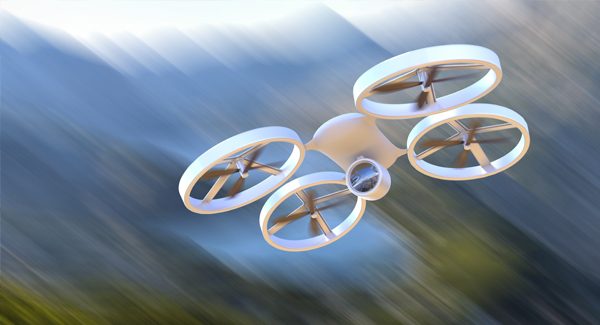The Federal Aviation Administration estimated that over 2 million drones would be sold in the United States during 2019. The proliferation of these unmanned aircrafts has created unique concerns involving privacy, access, and safety.
Below are five considerations involving drone use in condominium, homeowner, and townhome associations.
- Restrictions
Presently, the FAA prohibits commercial drones unless the government agency issues an exception. Personal and recreational drone use is allowed. However, the drone must be flown within the visual sight line of the operator. Additionally, the drone cannot be flown:
- over 400 feet above the ground,
- above heavily populated areas, or
- within three miles of an airport.
- Industry Applications
Drones equipped with cameras are being used by a number of industries, including:
- real estate agents filming a property for a listing;
- contractors in the inspection of roofs, tuck-pointing, and structures with challenging access;
- telecommunication companies for inspections and repairs of cell towers;
- insurance companies in assessing damaged property; and
- land development agencies in ground surveying and urban planning.
- Privacy
If an association uses a drone for property inspection purposes, it needs to avoid invasion of privacy claims. For example, the drone camera should not record or transmit video or photograph inside of a unit through a window where an owner has a reasonable expectation of privacy.
Furthermore, while it may be tempting for an association to police rules violations with a drone, the political and legal consequences can be extensive.
- Property Damage and Personal Injury
Whether it’s caused by operator or mechanical error, the potential for property damage or personal injury caused by an accidental drone crash landing is a realistic safety concern.
While drones typically only weigh between one to three pounds, an FAA report noted that a drone collision can cause measureable blunt force trauma. Drones also have sharp blades spinning at 8000 RPM (revolutions per minute) that can cause lacerations. Moreover, a drone crash can spread debris including sharp metal and battery chemicals.
- Association Regulations
An association’s common concern is likely the use of drones by residents for hobby or recreational purposes. Associations should consider adopting appropriate rules and potential amendments to their recorded covenants. Regulations can include:
- establishing no-fly zones around power lines or walkways;
- maintaining time restrictions on use of drones;
- addressing liability concerns by requiring residents who use a drone or who receive to indemnify the association; and
- registering resident drones like motor vehicles.
Whether you live in a high-rise condominium or a sprawling suburban homeowners association, drones already present unique issues. Moreover, as unmanned aircraft vehicle technology advances, more concerns will arise. How will an association address drone delivery of packages or construction equipment? Where can the drone land? Are there restricted hours of operation?
Satellite dishes and solar panels presented similar technology adoption challenges. Nevertheless, associations need to be proactive in developing reasonable rules and restrictions to address legitimate concerns and balance competing interests raised by drone use.
If your association has questions regarding drone use in your community or is interested in reviewing/adopting regulations, do not hesitate to contact our firm.
Since 1983, KSN has been a legal resource for condominium, homeowner, and townhome associations. Additionally, we represent clients in real estate transactions, collections, landlord/tenant issues, and property tax appeals. We represent thousands of clients and community associations throughout the US with offices in several states including Florida, Illinois, Indiana, and Wisconsin.
If our law firm can be of assistance, please call 855-537-0500 or visit www.ksnlaw.com.
—
This article is made available by the lawyer or law firm publisher for educational purposes only as well as to give you general information and a general understanding of the law, not to provide specific legal advice. By reading this article you understand that there is no attorney client relationship between you and the article author. This article should not be used as a substitute for competent legal advice from a licensed professional attorney in your state. © 2019 Kovitz Shifrin Nesbit, A Professional Corporation.

